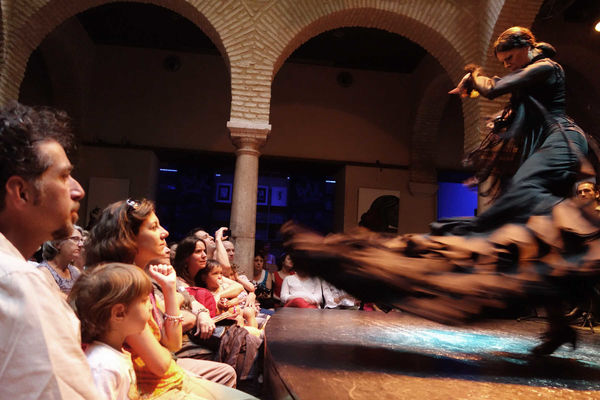Sevilla: A Perpetual Fiesta
By Rick Steves

Sevilla, the capital of Spain's southern Andalucía region, is as soulful a place as I've ever been. It's a wonderful-to-be-alive kind of town, where the color of flamenco dresses, melodies from guitars, click of castanets, and heat off the streets combine into an exhilarating hum.
The gateway to the New World in the 16th century, Sevilla boomed during Spain's golden age. The explorers Amerigo Vespucci and Ferdinand Magellan sailed from its great river harbor, discovering abundant sources of gold, silver, cocoa, and tobacco. For a time, these New World riches turned Sevilla into Spain's largest and wealthiest city.
Today's Sevilla has its share of impressive sights, including the world's largest Gothic cathedral (with the tomb of Christopher Columbus) and a fantastic Moorish palace and garden (the Alcázar). But the top thing to experience here is the hum of street scenes and the city's unique traditions.
Sevilla swings easily from the sacred to the secular. Holy Week (between Palm Sunday and Easter) is celebrated with intense devotional fervor here. Over the course of the week, about 100 floats depicting some aspect of the Passion of Jesus are paraded over the cobblestones at all hours by the faithful.
As the religious holiday wraps up, the mood shifts to party mode. A week or two after Easter, much of Sevilla packs into its vast fairgrounds for the April Fair. Countless tents line the lanes, each one a private party zone of a family, club, or association. Hold on to your castanets: It's a week of all-nighters, with the focus on dancing, drinking, and socializing.
On opening day, the cream of Sevilla's society parades around the fairground in carriages or on horseback. Men wear traditional suits with fitted pants and a short jacket, and women turn out in brightly colored flamenco dresses.
Because the party tents are open only to members and their guests, invitations are coveted. If you're not lucky enough to have a Sevillian friend who can get you in, make your way to one of the seven public tents. The sherry is dry and plentiful, and the food is fun, bountiful, and cheap.
Sevilla is the birthplace of another kind of party: flamenco. It's still the best place to experience this emotive dance-and-music form of snapping fingers, stamping feet, and clicking castanets. Many of the concerts in town are designed for tourists, but they are real and riveting. If you stay up to the wee hours, you might be lucky enough to catch a late-night set in a casual bar. In these cases, flamenco is a flamboyant happening, with bystanders clapping along and encouraging the dancers with whoops and shouts.
Even food is a theatrical event in this town. The colorful tapas tradition got its start in Andalucía, and Sevilla is the region's noshing capital. Classic, old-school tapas bars are everywhere, but nowadays gourmet places, with spiffed-up decor and creative menus, are the rage. If you want a good "restaurant" experience, your best value is to find a trendy tapas bar that offers table seating and sit down to enjoy some raciones (shareable dinner plate-size portions). As the tapas scene goes from early to very late and it's the standard way for locals to "eat out," the adventurous traveler will find it the most memorable and fun way to "eat local."
I always learn something new when I travel. This time in Sevilla, my tapas guide demonstrated how quality jamón (cured ham), sliced thin, will stick to a plate when you upend it. I'm not sure what that has to do with quality, but one thing I am sure of: When in Spain, life's too short to eat mediocre jamón. At least once, pay extra for the best ham on the list (ibérico).
For a different twist on tapas, look for an abacería, an old-time grocery store that doubles as a tapas bar. The combination isn't completely unexpected, as many tapas chefs rely on Spain's high-quality canned foods in composing their tasty tidbits. Squeeze into the back room of one of these spots, and you're squeezing back in time. Rubbing elbows with local eaters in an abacería, surrounded by tinned sardines and canned peaches, you'll feel like you're in on a secret…almost as if it were a kind of Spanish speakeasy.
To walk off a meal on a balmy evening, wander into the Barrio Santa Cruz, Sevilla's once-thriving Jewish quarter. This classy maze of lanes is too tight and tangled for cars but perfect for meandering among small plazas, tile-covered patios, and whitewashed houses draped in flowers. Getting lost is easy…and recommended. Orange trees abound, and when they blossom for three weeks in spring, the aroma is heavenly.
Rhythms change quickly in Sevilla, from the intensity of flamenco's beat to the quiet of its back alleys. It's street theater that everyone can both enjoy and be a part of.

